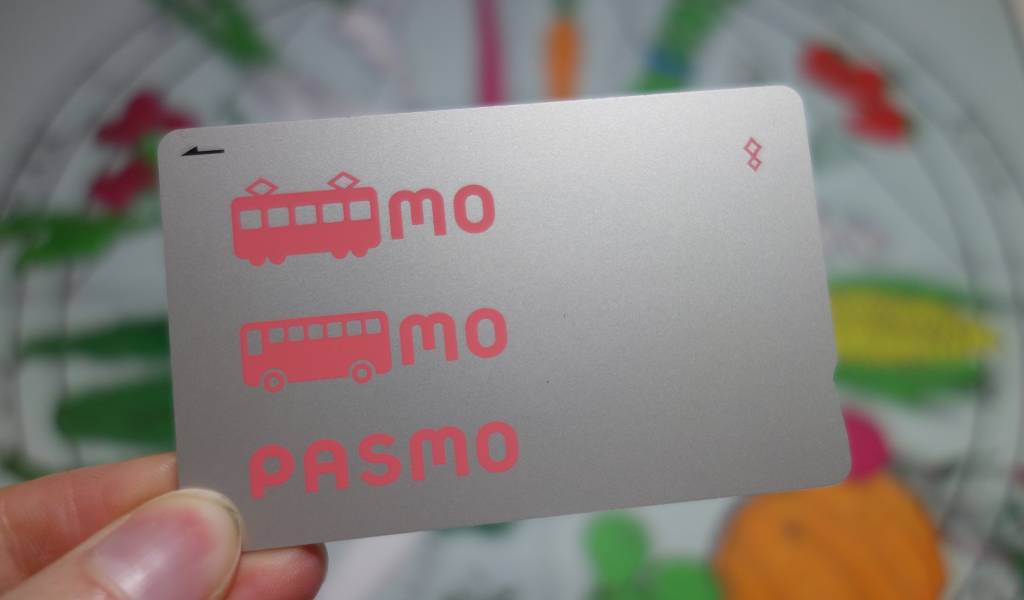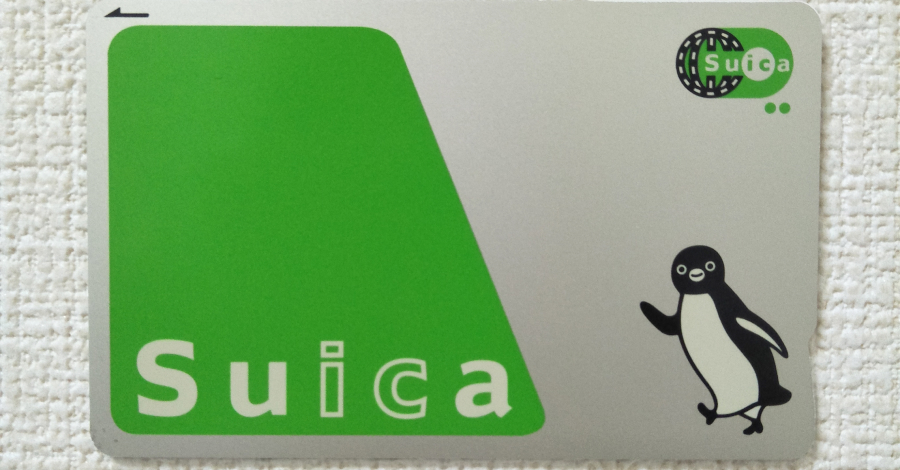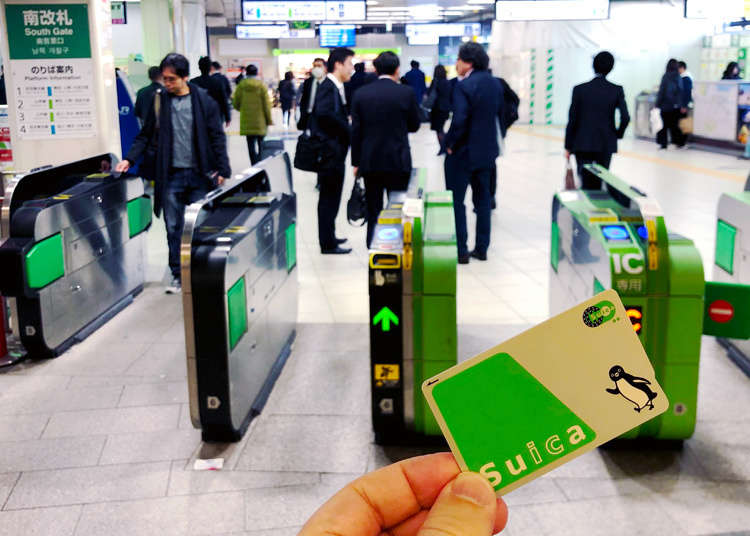Win a Free Trip to Japan!
Experience cherry blossoms and ancient temples
Embarking on a journey to Japan? One essential aspect of making your travel smooth and hassle-free is choosing the right travel card. In the bustling world of Japanese public transportation, Suica Japan and Pasmo stand out as the top contenders. But how do you decide which one suits your needs best? In this guide, we will dive into the essentials of how to use Suica card in Japan, comparing Suica vs Pasmo card Japan, and exploring where to buy Suica card Japan. We will also discuss the Suica card benefits and provide useful tips that cater specifically to foreign travelers. Whether you are curious about the cost comparisons or just need to understand how to use Suica in Japan, we’ve got you covered. Buckle up as we take you through the ultimate showdown: Suica vs Pasmo Japan – making sure you choose the best card for your suica japan travel experience.
Overview of Suica and Pasmo Cards
If you’re planning a trip to Japan, understanding suica, pasmo, and their benefits can significantly streamline your travel experience. Both cards are rechargeable smart cards used primarily to pay for public transportation and, increasingly, for purchases at various stores and vending machines.
What Are Suica and Pasmo Cards?
- Suica card:
- Issued by the East Japan Railway Company (JR East).
- Widely accepted in Greater Tokyo, Sendai, and Niigata areas.
- Pasmo card:
- Issued by the Tokyo Metro.
- Accepted on most public transportation systems in the Kanto area.
Both cards offer a seamless transit system experience, eliminating the need to buy tickets for each journey. Understanding how to use Suica card in Japan and the benefits of using Suica and Pasmo in Japan is crucial for efficient travel.
Key Features and Differences
| Feature | Suica | Pasmo |
|---|---|---|
| Issuing Authority | JR East | Tokyo Metro |
| Usable Areas | Greater Tokyo, Sendai, Niigata | Kanto region, including Tokyo |
| Reloading | At JR stations, convenience stores, and some ATMs | At Tokyo Metro stations, convenience stores, buses |
| Special Features | Can link to mobile wallets (iOS, Android) | Special commuter passes available |
| Acceptance at Stores | Convenience stores, vending machines, multiple shops | Convenience stores, vending machines, multiple shops |
Which One to Choose?
Choosing between Suica vs Pasmo card Japan largely depends on your travel route and entry points. While both cards are highly interchangeable as they work across the majority of transit systems in Japan, there are minor differences based on geographical location and issuing authorities. For instance, knowing where to buy Suica card Japan is as simple as locating a JR East station, while a Pasmo card is easier to obtain at Tokyo Metro stations.
In summary, both cards are excellent choices for easing your travel woes. Whether it’s a Suica or a Pasmo, your Japan trip will undoubtedly be smoother and more enjoyable.
By understanding the functionalities of both these cards, travelers can make informed decisions and enjoy the convenience of tapping in and out of Japan’s extensive transit networks.
How to Use Suica and Pasmo Cards in Japan
Navigating the world of Suica and Pasmo cards in Japan is quite straightforward and convenient. Here’s a guide on how to use Suica card in Japan alongside Pasmo, emphasizing everyday travel needs.
Steps to Using Suica and Pasmo Cards:
- Purchase the Card: First, acquire your card. Refer to the section on where to buy Suica card Japan for specific outlets.
- Load Your Card: Use automated machines at train stations to add funds. Maps and instructions in multiple languages make this easy.
- Checking Balance: Before embarking on your journey, quickly verify your balance at the machine or kiosk.
- Tapping In and Out: To enter and exit stations or buses, simply tap your card on the reader at the turnstiles or entrance.
- Non-Transit Uses: Beyond transportation, Suica and Pasmo can be used at vending machines, convenience stores, and even some restaurants.
The table below delineates more on Suica vs Pasmo card Japan usage and helps in understanding Suica card benefits:
| Features | Suica | Pasmo |
|---|---|---|
| Transit Systems | JR East, Tokyo Metro, more | Private Railways, Tokyo Metro, more |
| Accepted at Stores | Yes | Yes |
| Mobile Integration | Available (via Apple Wallet, Android) | Available |
| Deposit Required | ¥500 | ¥500 |
| Refundable Portion | Most of the balance is refundable | Most of the balance is refundable |
| Special Offers | Occasional discounts | Occasional discounts |
Additional Tips:
- Recharging: Both cards can be easily recharged at train stations and convenience stores.
- Lost Card: Register your card online, enabling you to transfer the balance to a new card if lost.
When weighing Suica vs Pasmo Japan, consider your own travel habits. Both cards fundamentally operate the same way, facilitating smooth travel and purchases, enhancing your suica japan travel experience immensely.
Comparing the Costs: Suica vs. Pasmo
When it comes to choosing between Suica vs Pasmo card Japan, one of the key considerations is the cost. Understanding the pricing structure and any additional fees associated with each card will help you make an informed decision.
Initial Purchase Cost
Both Suica and Pasmo cards have an initial purchase cost that includes a deposit and a minimum balance. Here’s a quick comparison:
| Card | Deposit (Refundable) | Minimum Balance |
|---|---|---|
| Suica | ¥500 | ¥1,500 |
| Pasmo | ¥500 | ¥1,500 |
Reloading Fees
One of the conveniences of both cards is that there are no extra fees for reloading. You can top up your card at any time at various locations, including train stations, convenience stores, and automated machines.
- Suica: Reloading can be done in increments of ¥1,000 up to ¥20,000.
- Pasmo: Similar to Suica, reloading can be done in increments of ¥1,000 up to ¥20,000.
Usage Fees
Using Suica or Pasmo cards for transit is straightforward and typically does not involve extra fees beyond the standard fare. However, if you are comparing Suica vs Pasmo Japan cards for different travel needs, the associated costs can slightly vary depending on the specific routes and regions.
Hidden Costs and Discounts
- Travel Discounts: Both Suica and Pasmo offer occasional travel discounts, especially for tourists.
- Usage in Stores: Both cards can be used in stores with no extra transaction charges.
Fare Adjustments
If you end up not having enough balance on your card when exiting a station, both cards provide an option to settle the difference through “fare adjustment” machines available at the stations.
“Whether you’re using how to use Suica card in Japan for intercity travel or Suica vs Pasmo card Japan for daily commutes, understanding the cost structure can be a game-changer.”
Suica vs Pasmo Card Benefits
Given the similar cost structures, your choice might come down to the additional benefits each card offers. For instance, Suica Japan travel offers better integration with JR East services, while Pasmo might be more convenient for non-JR East lines.
In summary, the initial costs, reloading options, and absence of hidden fees make both cards competitively priced. Your choice between how to use Suica in Japan effectively and Suica vs Pasmo Japan benefits will likely be influenced by your specific travel needs and routes.
Where to Buy Suica and Pasmo Cards in Japan
When planning your trip, it’s essential to know where to buy Suica card Japan and Pasmo card Japan to ensure a hassle-free travel experience. These cards can be purchased at several convenient locations throughout Japan, making it easy to kick-start your journey.
Key Locations to Purchase Suica and Pasmo Cards
Major Train Stations:
- You can buy Suica at JR East stations and Pasmo at subway stations in the Tokyo metropolitan area.
- These locations often have vending machines and ticket counters specifically for purchasing and recharging your cards.
Airport Stations:
- Narita Airport and Haneda Airport have dedicated counters and machines for both Suica and Pasmo. This can be incredibly convenient, allowing you to get your card as soon as you land.
Convenience Stores:
- Certain convenience stores such as FamilyMart and Lawson also sell these travel cards. Look for stores near popular tourist spots and transportation hubs.
Comparison Table for Key Purchase Points
| Location | Suica Card Availability | Pasmo Card Availability |
|---|---|---|
| Major Train Stations | Yes (JR East Stations) | Yes (Tokyo Metro, Toei Subway, etc.) |
| Airport Stations (Narita, Haneda) | Yes | Yes |
| Convenience Stores (FamilyMart, etc.) | Limited (selected locations) | Limited (selected locations) |
Tips for Buying and Using Your Card
- Initial Deposit: Both cards require a refundable deposit.
- Cards come pre-loaded with a small amount of travel credit, ideal to get you started.
- English Instructions: Most machines and counters offer English-language options to assist foreign travelers.
By knowing how to use Suica card in Japan and recognizing the difference in the locations offering these cards, you’ll be well-prepared. Whether you’re interested in understanding Suica vs Pasmo card Japan or figuring out how Suica card benefits your travels, this guide can help you manage your transportation needs seamlessly.
With this information, you’re ready to decide on Suica vs Pasmo Japan and make the best choice for your journey. Happy travels!
Benefits of Using Suica and Pasmo in Japan
When traveling through Japan, having a reliable and versatile travel card can make your journey infinitely smoother. Both Suica vs Pasmo Japan have distinct benefits, making them invaluable tools for navigating the country. Let’s explore the top advantages each card has to offer:
Convenience
Both cards provide seamless access to Japan’s extensive public transportation system, including trains, buses, and even taxis. They ensure you don’t need to fumble with cash, making your travel experience significantly more painless.
Widespread Acceptance
Suica Card Benefits:
- Highly accepted across the majority of Japan.
- Can be used not only in areas covered by JR East but also in other regions.
Pasmo Card Benefits:
- Similarly accepted widely, especially in Tokyo and surrounding areas.
- Extends to various local transportation networks.
Easy Payments
In addition to transportation, both cards can be utilized for small purchases at numerous convenience stores, vending machines, and even some restaurants and cafes. This makes how to use Suica card in Japan fairly straightforward, adding unparalleled convenience.
Rechargeable
- Recharge either card at train stations, convenience stores, and dedicated machines.
- Link them to Japanese credit cards for auto-recharge options.
No Expiry Date
Both cards remain valid for about 10 years without use. Therefore, they are a great investment for frequent visitors.
Comparing Suica vs Pasmo Japan Benefits
| Feature | Suica Card | Pasmo Card |
|---|---|---|
| Contactless Payments | Accepted at JR East stations and most parts of Japan | Highly used in Tokyo and broader Kanto area |
| Shopping | Usable at many retail outlets, increasing daily functionality | Similar acceptance for a vast range of shopping and dining options |
| Recharge Options | Easily recharged via machines, kiosks, and linked to credit cards | Equally straightforward with numerous options, including online recharge through specific apps |
Choosing between Suica vs Pasmo card Japan depends on your travel areas and frequency. Nonetheless, both options offer extensive benefits that enhance your travel convenience. With this in mind, understanding where to buy Suica card Japan or purchasing Pasmo can positively impact your overall travel experience, ensuring smooth and efficient movement throughout your journey.
Using these smart cards will not only save you time but also let you explore Japan with ease and comfort.
Suica vs. Pasmo: Which Card is Best for Different Travel Needs?
When planning a trip to Japan, one of the essential decisions you’ll need to make is choosing between the Suica and Pasmo cards. Both provide convenience, but they may suit different travel needs.
Daily Commuters
If you are living in or frequently traveling around Tokyo, the Pasmo card has its advantages. It’s particularly useful for those who commute regularly on the Tokyo Metro and private railways. Pasmo is also compatible with bus lines, making it a versatile choice for a daily commute.
Tourists Exploring Multiple Cities
For tourists aiming to explore beyond Tokyo, the Suica card Japan is a superior option due to its extensive coverage. It works seamlessly not only in Tokyo but also in other major cities like Osaka, Kyoto, and more. It’s ideal for those looking to hop between cities without the hassle of buying multiple transit cards.
“Considering my needs to travel across various cities in Japan, the Suica card proved to be a game-changer. Not only could I use the same card in Osaka and Kyoto, but it also worked flawlessly for metro travel in Tokyo.”
Electronic Payments and Shopping
Both cards offer features for electronic payments beyond public transit. However, the Suica card has a slight edge when it comes to non-transport transactions. You can use it at convenience stores, vending machines, and even some restaurants and attractions.
Here’s a quick comparison to help you decide:
| Travel Needs | Suica | Pasmo |
|---|---|---|
| Commuting in Tokyo Area | Yes | Yes |
| Exploring Other Cities | Yes (Osaka, Kyoto, etc.) | Limited |
| Electronic Payments | Broad acceptance at various merchants | Generally limited to Tokyo area |
| Integration with Other Modes | Trains, buses, taxis, convenience stores | Trains, buses, some convenience stores |
Choosing the Right Card
Assess your travel needs before making a decision. Are you staying strictly within Tokyo for daily commutes? The Pasmo card should suffice. Planning on exploring multiple cities? The Suica card will be a better companion.
Both cards ultimately simplify the tourist experience, making it easy to navigate Japan’s extensive public transport system. Remember, the rivalry of Suica vs Pasmo Japan is one where either option enhances your journey; it’s just about aligning with your specific travel agenda.
Tips for Foreign Travelers Using Suica and Pasmo
When navigating Japan’s bustling cities, foreign travelers can greatly benefit from utilizing Suica and Pasmo cards. These rechargeable smart cards simplify transportation and even offer convenience for shopping and dining. Here are some valuable tips for maximizing their use:
Simple Steps to Using Suica and Pasmo Cards:
Purchase and Recharge:
- Where to buy Suica card Japan: Suica cards are available at JR East train stations, airports like Narita and Haneda, and even convenience stores.
- Pasmo cards can be bought at Tokyo Metro stations and partnered stores.
- Recharge both cards at station kiosks, convenience stores, or via designated machines using cash or credit cards.
Using the Cards:
- Suica Japan travel: Simply tap the card on the ticket gates as you enter and exit. The system automatically deducts the fare.
- For buses, tap the card reader upon boarding and alighting.
Additional Tips:
- Balance Check: Use card kiosks or mobile apps to check your balance.
- Lost Cards: Register your card online for quick replacement if lost.
Suica Card vs. Pasmo Card Japan:
| Feature | Suica | Pasmo |
|---|---|---|
| Purchase Locations | JR East Stations, airports, convenience stores | Tokyo Metro stations, partnered stores |
| Usability | Trains, buses, vending machines, stores, restaurants | Primarily Trains and buses, fewer retail options |
| Branding | How to use Suica card in Japan: Tokyo and beyond | Suica vs Pasmo card Japan: Greater Tokyo Area |
Why Use These Cards?
Suica card benefits include convenience, ease of use, and widespread acceptance. Whether you’re debating Suica vs Pasmo Japan options, both offer seamless travel transitions and ease for international visitors.
By following these tips, foreign travelers can effortlessly navigate Japan’s public transportation and even make everyday purchases, ensuring a smooth and enjoyable trip.
Frequently Asked Questions
What are Suica and Pasmo cards?
Suica and Pasmo are rechargeable smart cards used for convenient travel on public transportation across Japan. They allow you to pay for train rides, bus fares, and even purchases at certain stores and vending machines without the need to buy individual tickets each time. Suica is issued by JR East, while Pasmo is issued by a consortium of private railway, subway, and bus operators in the Tokyo metropolitan area.
Can I use Suica and Pasmo cards interchangeably?
Yes, Suica and Pasmo cards are fully compatible for travel on almost all trains, buses, and subways in Japan, especially in major cities like Tokyo. You can use either card for rides on JR lines as well as on private railway and metro services, making them highly versatile and convenient for travelers.
Where can I purchase Suica and Pasmo cards?
Both Suica and Pasmo cards can be purchased at train stations, particularly at JR East-operated stations for Suica and at Metro and private railway stations for Pasmo. They are available from ticket vending machines and at ticket counters. Additionally, you can also buy them at major airports like Narita and Haneda, which is especially convenient for international travelers.
Are there any differences in the features of Suica and Pasmo cards?
Functionally, Suica and Pasmo cards are almost identical when it comes to transportation and retail usage. However, there might be slight differences when it comes to regional specific features and promotions. For example, some promotional offers or loyalty programs might be exclusive to either Suica or Pasmo depending on the issuing operator. Additionally, while the designs may differ, the fundamental features they offer are essentially the same.


